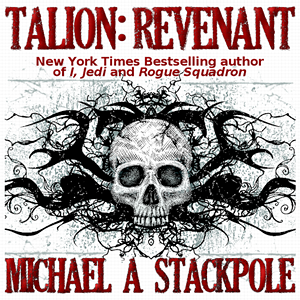How Long is That Digital Book?
In talking about digital books with folks I’ve discovered there’s a need for a new metric by which to judge books. With print books we can easily categorize them as “slim” or “normal” or “doorstop.” (Or, in the case of The Wheel of Time series or the Harry Potter books, a “barricade” of books.) Everyone gets it. The more mammoth the book, the more reading pleasure one may get out of it.
With digital books, this just doesn’t work. When folks ask me about the iPad or Sony Reader, and I tell them that I currently have over 300 books in the device, they view this claim skeptically. There clearly isn’t enough room in so slender a device for that many books. For some folks, 300 books is more than they have in their personal libraries. (For some, it’s more books than they’ve seen in a lifetime.) I explain that books are fairly small files. In fact, in the 3.13 gigs I used to store the movie Up on my iPad, I could have had over 6,000 stories in pdf format—and that format tends to be fairly piggish compared to epub.
Even the more precise (though deceptive) metric of page count doesn’t help much. Because you can vary the size of the type and, therefore the number of words on a page, page count is mutable. While authors keep count in words (since we so often get paid by the word), word count means nothing to the average reader. A book described as a doorstop could be anywhere from 200,000 to 400,000 words. It’s as if someone asks how fast you were driving, and you reply, “Peaches.” I’m sure, somehow, you can make that math work, but the average person can’t.
What we need is a simple way to calculate the number of hours it takes for someone to read something. In this case, the someone will be an “average reader.” Difficult concept, I know, but for our purposes we’ll designate this person as someone comfortable reading at an eighth grade reading level. That’s pretty much the reading community. While many of us can shift into a higher gear to read technical material, for relaxation and fun, the eighth grade reading level suits us just fine.
The British Broadcasting Company uses the read rate of three words per second as the pace they want their readers to hit. That works out to be just a bit more than 10,000 words per hour. Assuming for our purposes that a reader is not reading under ideal circumstances allowing for complete concentration, 10,000 words an hour is about right for reading speed. (If you read faster, please do not leave a comment telling me my math is off. You’re manifestly not the average reader of which I speak. You’re obviously a voracious reader. My mortgage holder and I both thank you for your patronage down through the years. Use the following calculations and compare your speed to the suggested speed, then you’ll know how to handicap Hours of Reading Pleasure (HRP) when you see it.)
So, Hours of Reading Pleasure (HRP) equals Word Count/10,000. Pretty simple math. A short story will run between a half and full hour. A novel like Talion: Revenant should be good for 17 HRP. The way I write most of my books, a chapter should take you fifteen minutes, and there’s not a single one of my novels that should come in under 8 HRP. Fortress Draconis, my longest, would hit 21.7 HRP (21 hours, 42 minutes).
I think it’s important that writers and publishers adopt the HRP scale for our digital works for two obvious reasons. First, people tend to plan their activities based on time available. If they have a half hour available, knocking off a short story makes sense. If they’re going on a long plane trip, a novel makes sense. We’ll be giving them the information they need to make a wise choice among their entertainment alternatives—a service that makes our work even more accessible.
Second, every other medium has time data associated with it, from music and podcasts, to TV shows and movies. Compared to paying $14.95 to download a movie that will last for two hours, getting a 17 HRP novel for $5 is the bargain of the century. Heck, even a 22 minute TV show at $1.99 bites compared to a 45 minute novella at the same price. Because time consideration often outweighs financial considerations in entertainment selection, HRP proves that digital stories and novels are a great entertainment value. (Folks could even go the route of adding a “per hour” financial cost to their descriptions of work.)
It’s no secret that books (digital or print) are great value for money. Helping readers understand that, and making our work more useful to them, is a wonderful way to keep ourselves relevant in the future.



 14. Aug, 2010
14. Aug, 2010 








18 Responses to “How Long is That Digital Book?”